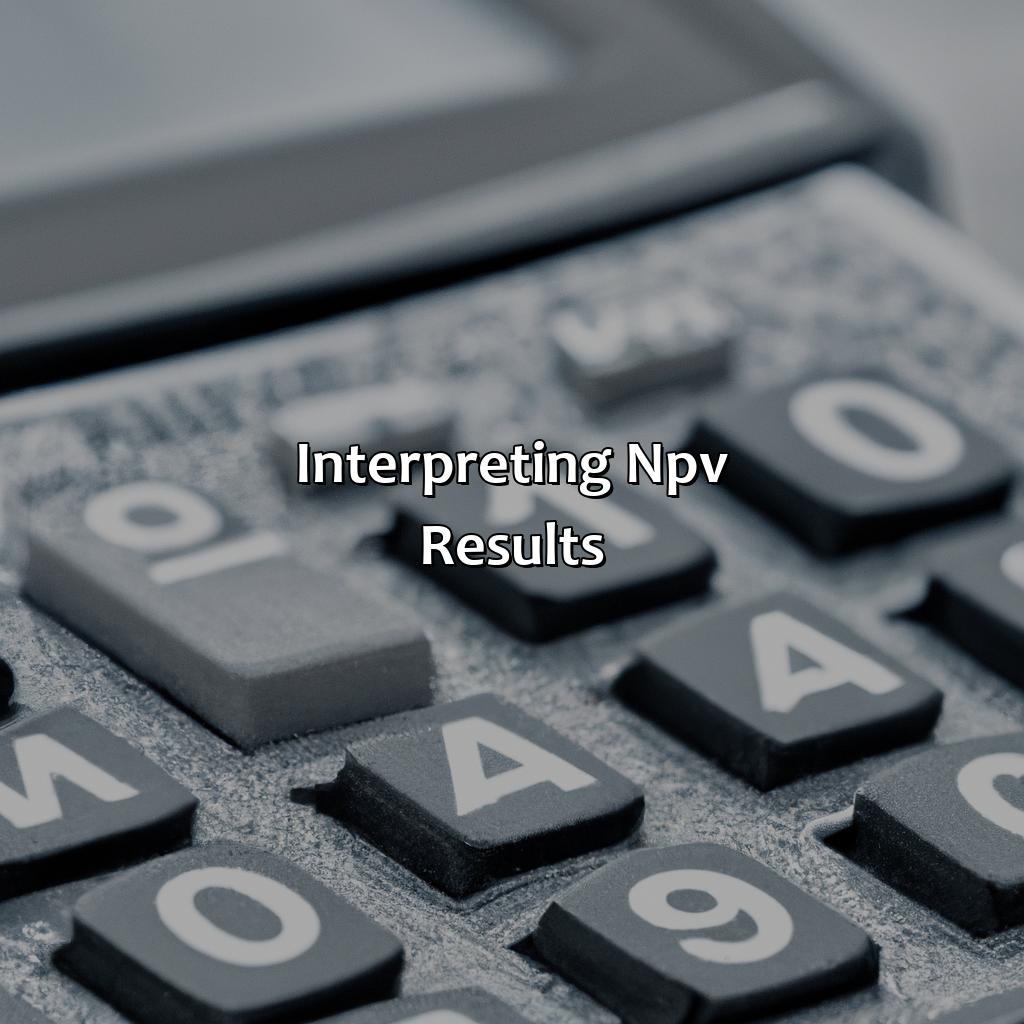What Is The Net Present Value Of The Investment?
Key Takeaway:
- Net Present Value (NPV) is a financial metric used to determine the present value of future cash flows generated by an investment, adjusted for the time value of money.
- The calculation of NPV involves forecasting the cash flows that will be generated by the investment and discounting them back to their present value using a discount rate that reflects the risk associated with the investment.
- The interpretation of NPV results is important in investment decisions, as a positive NPV indicates that the investment is expected to generate a return that exceeds the required rate of return, while a negative NPV indicates that the investment is not expected to generate a return that meets the required rate of return.
Are you considering investing in a business and wondering what the net present value (NPV) of the investment is? Knowing NPV helps you understand the potential return and decide if it’s worth the risk. This article will help you calculate and interpret NPV to make the right investments.
Understanding Net Present Value (NPV)
Net Present Value (NPV) is a financial calculation that determines the value of an investment, taking into account the time value of money and the risks involved. It calculates the present value of expected future cash flows, considering the opportunity cost of investing in alternative projects. By subtracting the initial investment from the net present value, investors can determine whether the investment is profitable or not. It is a useful tool for decision-making regarding long-term investments, as it considers the time value of money and inflation.
In addition to the traditional NPV formula, there are other variations of the formula that can be used in different scenarios, such as the Adjusted Present Value (APV) method, which takes into account the effects of debt financing and tax shields. Another variation is the profitability index (PI), which compares the present value of cash inflows to the initial investment.
To calculate the net present value accurately, it is important to use realistic estimates of future cash flows and discount rates that reflect the level of risk associated with the investment. One suggestion is to conduct a sensitivity analysis to understand how changes in key variables, such as interest rates and revenue projections, can impact the outcome. Additionally, it is important to consider the opportunity cost of investing in alternative projects and potential market changes.

Image credits: retiregenz.com by James Jones
Calculation of NPV
Investors often use the NPV method to determine the present value of future cash flows from an investment project. The calculation of the net present value involves comparing the present value of cash inflows from an investment to the present value of cash outflows involved in the investment.
A table illustrating the calculation of NPV can be constructed with appropriate columns such as cash flows, discount rate, present value, and cumulative present value. The cash flows column can contain the expected cash inflows and outflows for each period, while the discount rate column can contain the rate used to discount the cash flows to their present values. The present value column will contain the present value of each cash flow, and the cumulative present value column can contain the cumulative present values at the end of each period.
Other details to consider in calculating NPV include the risk associated with the investment and the time value of money. Investors may use different discount rates to account for the risk of the investment. Moreover, it’s important to remember that the cost of capital plays a crucial role in determining whether an investment generates a positive or negative NPV.
Historically, the NPV method has been widely used by investors in evaluating the profitability of investment opportunities. By taking into account both the inflows and outflows of an investment, the NPV method provides a valuable metric to determine the value of a project.

Image credits: retiregenz.com by Yuval Woodhock
Interpreting NPV results
Investment decisions can be made easier by calculating the net present value (NPV). This value reflects the current worth of the future returns from an investment, taking into account the time value of money. Interpreting NPV results involves analyzing whether it is positive or negative. A positive NPV indicates a profitable investment, while a negative NPV means the investment would result in a loss. It is important to consider the initial investment, expected returns, and the cost of capital. Considering all these factors can help in determining the financial feasibility of the investment.
Furthermore, understanding the limitations of NPV can help in making informed decisions. For instance, NPV cannot take into account intangible benefits like brand reputation or social impact. Additionally, forecasting future cash flows can be challenging, resulting in errors in the final NPV calculation. Despite these limitations, NPV remains a crucial tool for making sound investment decisions.
When evaluating investment opportunities, it is important to consider the magnitude of the NPV rather than relying solely on its positivity or negativity. An investment with a highly positive NPV may be preferred over one with a marginally positive NPV. This approach ensures that the investment provides an adequate return on investment and is worth the initial investment.
A notable example of NPV being used in investment decisions is in the oil and gas industry. When evaluating potential projects, oil companies calculate the NPV of each project, considering the initial investment, expected production, and oil prices. This enables them to make informed decisions on which projects to invest in and which ones to forego.

Image credits: retiregenz.com by Harry Washington
Importance of NPV in Investment Decisions
NPV plays a crucial role in analyzing the worthiness of investment decisions. It measures the excess or shortfall of cash inflows over outflows after considering the time value of money. By assessing project profitability, NPV assists investors in choosing the best investment opportunity. Moreover, it takes into account the risk in investments, which provides more realistic decision-making scenarios.
An investment decision’s NPV is sensitive to variations in expected cash flows, discount rate, and project timelines. Sensitivity analysis helps to understand the impact of individual factors on NPV and make informed decisions. Investors should incorporate NPV analysis as a fundamental tool into their investment decision-making processes before choosing an investment opportunity.
Pro Tip: Investing solely based on NPV figures may not be feasible in the real world as there are other factors such as market trends, competition, and legal issues to consider. Therefore, investors should use NPV analysis as an additional tool with other standard investment analysis techniques.

Image credits: retiregenz.com by David Arnold
Five Facts About Net Present Value of Investment:
- ✅ Net Present Value (NPV) is a financial measure which calculates the present value of cash inflows minus the present value of cash outflows. (Source: Investopedia)
- ✅ NPV helps investors and companies determine whether a project or investment will result in a profit or loss. (Source: Corporate Finance Institute)
- ✅ The calculation for NPV takes into account the time value of money, using a discount rate to adjust for inflation and other factors. (Source: The Balance)
- ✅ A positive NPV indicates that an investment is expected to generate value or profit, while a negative NPV indicates that it is likely to result in a loss. (Source: Wall Street Mojo)
- ✅ NPV is a popular tool used in capital budgeting and investment decision-making in businesses and industries worldwide. (Source: Financial Times)
FAQs about What Is The Net Present Value Of The Investment?
What is the net present value of the investment?
The net present value of an investment is the difference between the present value of its cash inflows and the present value of its cash outflows.
How is the net present value calculated?
The net present value is calculated by subtracting the initial investment from the sum of the present values of the expected cash inflows.
Why is the net present value important?
The net present value is an important financial metric as it helps to determine whether an investment will be profitable. It takes into account the time value of money and compares the expected return to the cost of the investment.
What factors are included in calculating the net present value?
The factors that are included in calculating the net present value of an investment include the expected cash inflows, the cost of the investment, and the discount rate used to calculate the present values of the cash flows.
What does a positive net present value indicate?
A positive net present value indicates that the expected cash inflows are greater than the cost of the investment and that the investment is expected to be profitable.
What does a negative net present value indicate?
A negative net present value indicates that the cost of the investment is greater than the expected cash inflows and that the investment is not expected to be profitable.
